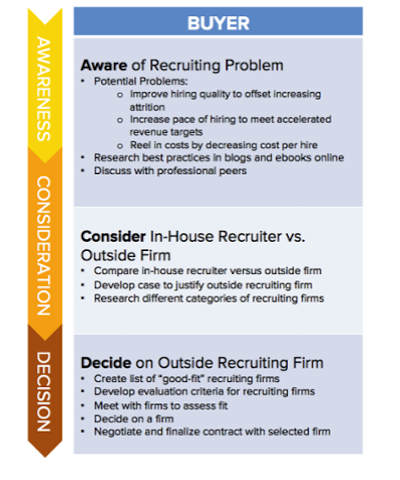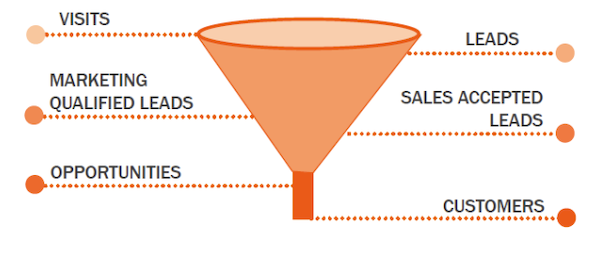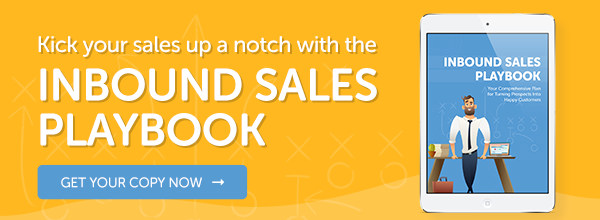Essential Sales Pipeline Stages
- 1. Lead Generation
- 2. Lead Nurturing
- 3. Qualified Leads
- 4. Custom Stages
- 5. Closing Deals
- 6. Won/Lost
- 7. Post-Sale
Every business has its own sales process, and they should also have sales pipeline stages that coincide with their process.
Clearly defined pipeline stages help to speed up the sales process by equipping sales teams with everything they need to successfully carry out a deal. No two sales processes are alike, so it is important for you to know how to develop pipeline stages for your business.
Before you do that, you must have a clear understanding about what a sales pipeline is and the typical stages most businesses use for their pipeline.
What Is a Sales Pipeline?
A sales pipeline is a visually organized way to track the steps of the buyer’s journey as leads convert to customers. The sales pipeline provides detailed actions for sales reps to take at each stage in the journey.
A hypothetical buyer's journey might look like the illustration below:
 Source: HubSpot
Source: HubSpot
This helps sales reps to manage their pipeline and track their pipeline more effectively since they’ll always have an understanding of what their prospects need. With a sales pipeline, sales reps are also able to estimate when deals close.
Sales Pipeline vs. Sales Funnel
You may think you can use the term sales pipeline and sales funnel interchangeably because they both refer to the process of moving prospects through a sale. The stages of a sales pipeline and sales funnel are the same, only they are represented differently.
The goal of a sales pipeline is to help sales teams to get an idea of where their prospects are in their journey so they can forecast sales, align teams, follow-up, and close deals faster.
The sales funnel is a representation of what goes on in sales. It is an upside-down pyramid that helps businesses figure out their conversion rate at each point or stage of their sales process.

Source: HubSpot
The sales funnel essentially provides a business with historical data that can help them to tailor their sales process according to the issues they identify at specific stages in the buyer’s journey. This allows them to improve their conversion rate to secure more deals.
A sales pipeline is more active in the actual sales process, whereas a sales funnel is reactive. Each business may have different stages on their sales funnel or sales pipeline. A sales pipeline must match the steps you define in your buyer’s journey.
7 Sales Pipeline Stages Every Business Needs (+ Examples)
Here is a list of the seven stages for you to consider adding to your sales pipeline.
1. Lead Generation
What Is It?
Lead generation is when prospects are attracted and engaged through marketing efforts.
Some common marketing methods for lead generation include content, email, and events. Prospects inquire about your offerings, and their contact information is collected. It is then stored for further follow-up actions.
What Happens?
A record is created through a CRM contact card when a prospect fills out an online form on your website or when a salesperson captures information on a phone call.
The sales software typically auto-populates follow-up dates, and the sales rep receives reminders to get in contact. The sales rep makes contact with the prospect (usually after trying a few times). If no contact is made, a prospect lingers in this stage.
Example
A software company publishes a new blog post about the best new software to use for streamlining workflows. A prospect conducts a search on Google and clicks on the blog post. They want to know more about similar topics so they click a CTA that entices them to provide their email address to subscribe to the blog.
Tina, a sales rep, sees the information pop up in their CRM software and claims the card. The system creates follow-up dates for Tina. She contacts the prospect and discovers more about their needs, wants, and pain points.
2. Lead Nurturing
What Is It?
Lead nurturing is the process of developing relationships with your leads. During this stage, sales reps seek to build rapport and provide value by sending personalized content to leads.
What Happens?
A sales rep uses the information they learned about the prospect during a conversation or from their own research and selects content that they believe will be helpful for their lead. They send the piece of content and follow up via phone or email.
Example
Tina refers to her notes from the initial sales call and sorts through relevant blog posts and content offers based on the needs and pain points her lead mentioned on the call.
She selects an article about how to streamline workflows quickly and efficiently because she knows that her lead has issues with bottlenecks in her workflows. However, the lead wasn’t sure if fixing them was worth the effort of changing her processes and re-delegating tasks to her whole team.
She continues to follow up with her lead to provide her with value and to make sure the lead is still interested in their software.
3. Qualified Leads
What Is It?
At this stage, the sales rep needs to make sure the lead is qualified to make a purchase. This means that the lead has the need, budget, and authority to make the purchasing decision.
What Happens?
The sales rep asks to set a sales appointment to close the deal. This may mean that the sales rep sends them relevant paperwork so they can gather additional information that allows them to create a proposal or quote.
Some prospects will procrastinate on making the appointment or filling out the paperwork. This may stall the sales process and a sequence of new follow-up indicators will populate in the CRM if the prospect has not responded yet.
Example
Tina finds out who the decision makers are in her lead’s company. She finds out that the person she has been speaking with is authorized to make the purchasing decision.
She asks what processes they normally go through when considering a new vendor to gauge how long their process takes or if they have any unusual requirements before purchasing.
She then finds out when they need the new software installed to determine urgency. The lead needs their new software within the next two months. She then asks about the budget.
The lead says that the mid-level software package is within their budget. Tina determines that this lead is qualified.
4. Custom Stages
What Is It?
The sales process up until this point is the same for most businesses. Things may start to change at this stage for some organizations.
For instance, some organizations have different sales lead stages such as arranging a free trial period, scheduling an in-person meeting, sending a product sample, or hosting a demonstration.
No matter how a business uses their additional stages, they are still designed to move leads closer to a deal.
5. Closing Deals
What Is It?
This is when the sales rep asks the prospect for the sale, and the sales process starts coming to a close.
What Happens?
A proposal is sent, and it is either accepted or rejected by the lead.
Example
Some closing questions our fictional software sales rep might say are:
- “Do you see yourself using this software package?”
- “Does that make sense for you?”
- “When should we get started on implementation?”
- “Are you going with [x package/tier] or [y package/tier]?”
- “Whose name should I make the invoice out to?”
- “Do you want to upgrade by adding [x feature]?”
- “Ready to move forward? I can send the contract over right now.”
6. Won/Lost
What Is It?
At the end of the sales process, the concluding result is a win or a loss.
What Happens?
The lead accepts the proposal or decides it’s not the right time for them to make the decision. If they accept, they become a customer. If they decline, they may not necessarily be lost forever, but at that moment they are no longer a viable lead.
Example
Tina, the sales rep, receives a signed proposal or contract back from her lead. The lead is now a customer. She sets up another meeting to begin the onboarding process with her new customer to ensure a smooth transition into the new software.
7. Post-Sale
What Is It?
Technically, the sale is the end of the pipeline. However, the customer relationship goes far beyond that. This is the stage when marketing and sales continue to engage with the customer to add value.
What Happens?
Onboarding occurs, and a sales rep checks in with the customer after a specific period of time to see how the customer is liking their product or services. If the customer has issues, the organization works to resolve this.
If a lead declines your offerings, set a follow up date for a few months later to see if you can earn their business.
How to Start Building Your Sales Pipeline Stages
Here are five steps to help you develop your sales pipeline so you can start closing more deals fast.
Generate a List of Your Prospects.
Before you begin deciding what your sales pipeline stages will be, you should write a detailed list of people who are thinking about buying your products. Include information like their names, contact information, their job title, how they got in touch with you, or how you know they’re interested.
If you’ve already talked to them, try to assign them to a projected pipeline stage. Determine if they are qualified or if they’ve made contact with one of your reps. You can change the stages later if they are incorrect.
Write Down the Steps of Your Sales Process.
Your sales process should have clear and structured steps that tell your team what activities they should do and when to close a deal.
Your sales process will help you figure out the stages of your sales pipeline if your sales process is well defined. Find the most important important steps in the process that align with your buyer’s journey to help you figure out the stages that make sense for your organization.
Keep Your Revenue Goals in Mind.
Your pipeline is a tool for you to use so you can achieve your revenue goals. Keep these goals on hand to determine the things you must do to reach these goals.
The revenue numbers you want to attain will be able to answer this important question: How many deals need to be in your pipeline so you can meet your objectives?
Once you know how many of your leads convert to customers, you can calculate the amount of deals you need early on in the process.
Include Your Sales Team.
Your sales team members are the ones who carry out your sale process and interact with your prospects and leads every day. They can provide you with valuable insights to help you build the stages of your pipeline.
Add in the Essential Metrics.
Metrics are the keys to success when building your stages. Consider these five metrics to guide your sales pipeline:
- Lead source: Where your prospects come from or how they found out about you.
- Industry: Do you notice your product or service being popular with one industry over another? Are you targeting your audience correctly?
- Decision makers involved: Know the decision makers you are actually selling to. Use different strategies for different buyer personas.
- Deal size: Personalize your pitch according to the size of the deal and their budget using segmentation strategies.
- Probability to close: Estimate how likely a deal is to close based on the conversations your team has with them.
Make sure your sales pipeline is flexible enough in order to accommodate different analyses and anomalies so you can fix the broken parts of your sales pipeline accordingly.
You can begin to master your sales outcomes when you master the stages in your sales pipeline. Stay prepared to deal with industry shifts, new competitors, major opportunities, and internal strategic changes by assessing and adapting your sales pipeline often to ensure there are no gaps.


Erika Giles
Erika is a Marketing Copywriter at Bluleadz. She is a huge fan of houseplants and podcasts about conspiracy theories. She spends most of her free time reading, writing, and enjoying the outdoors.